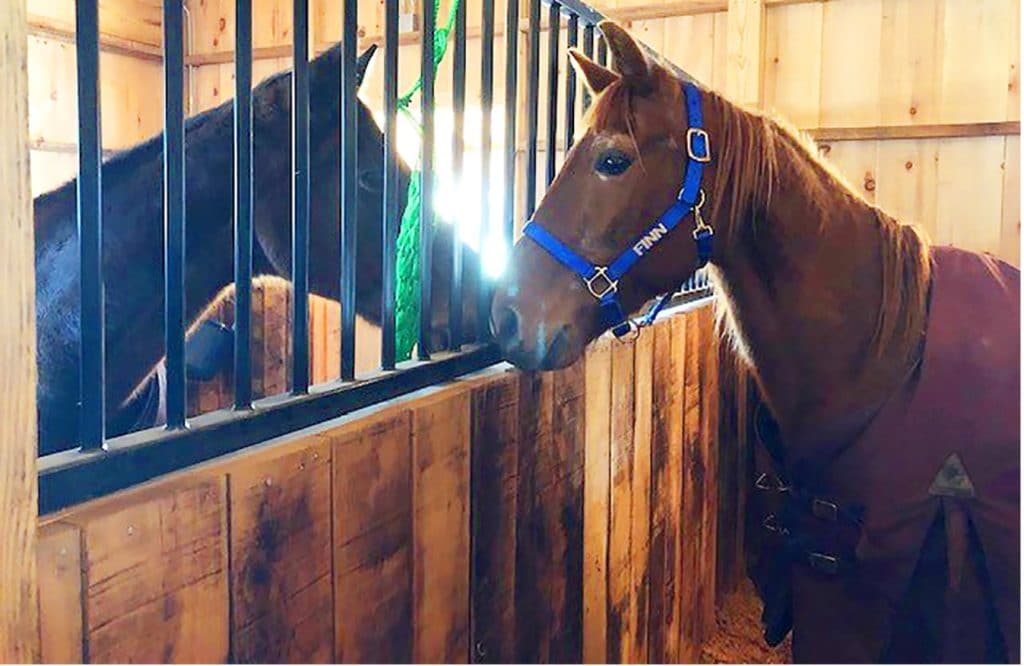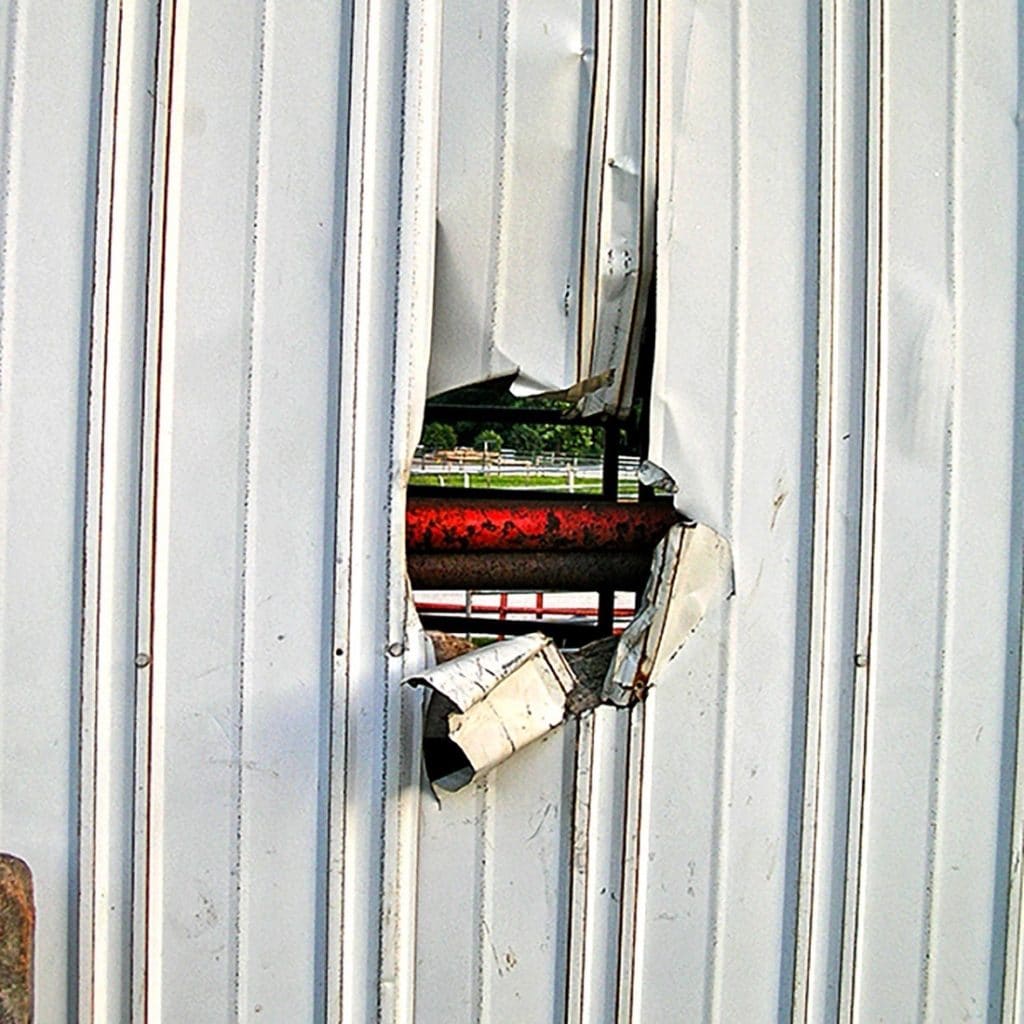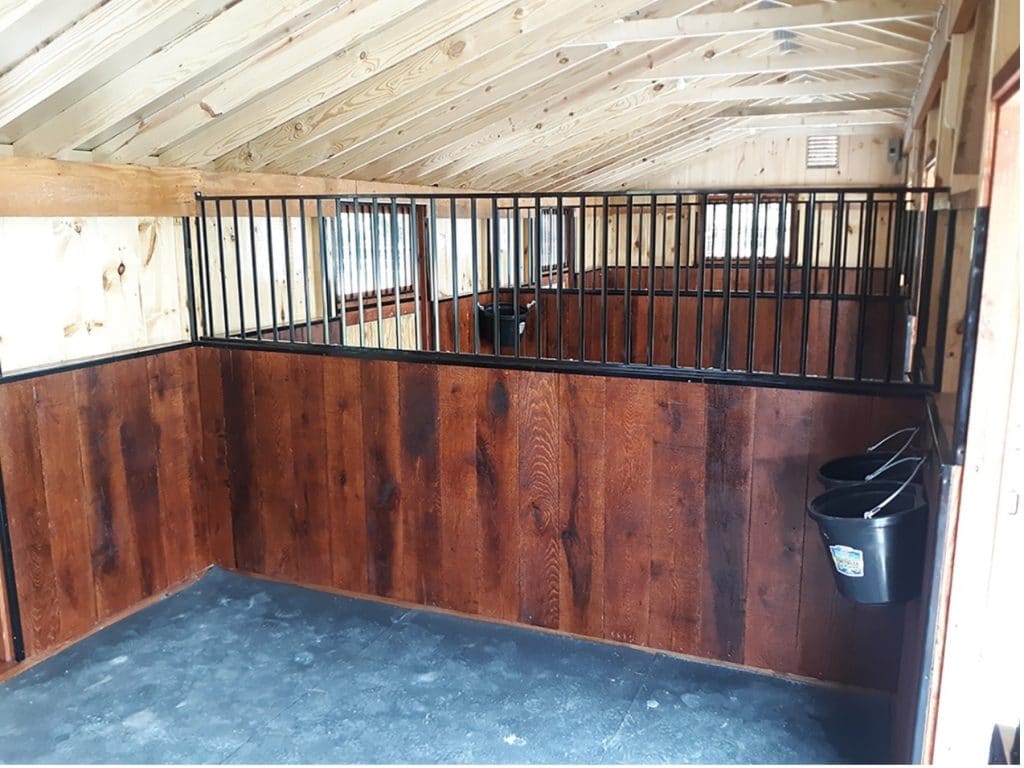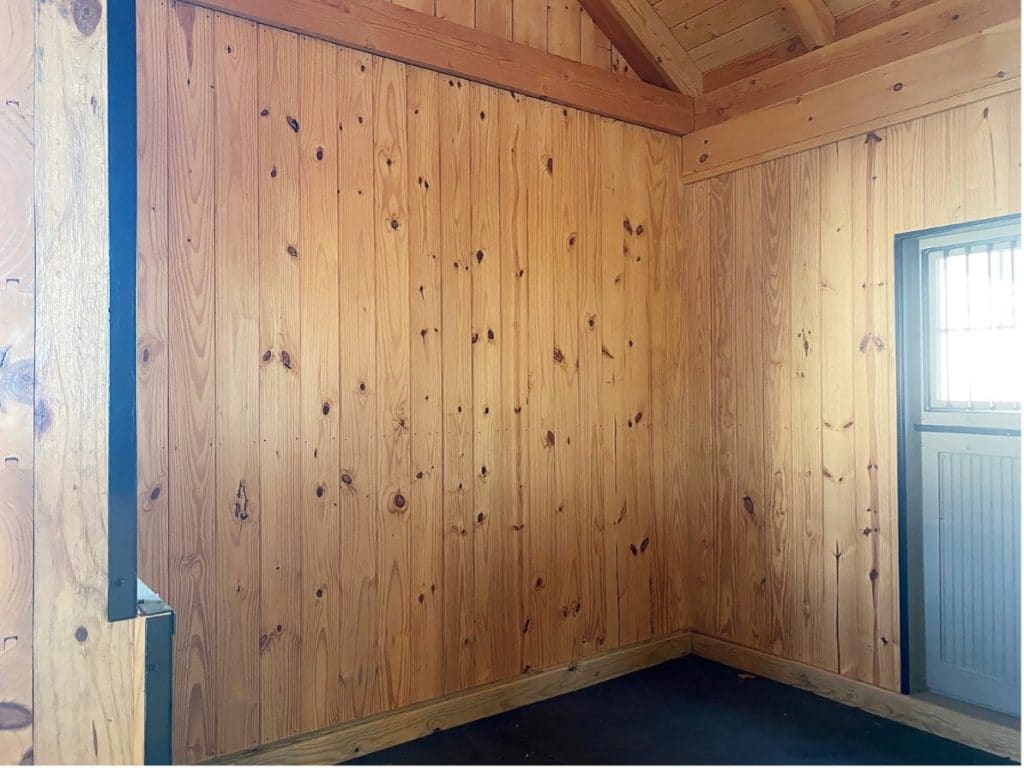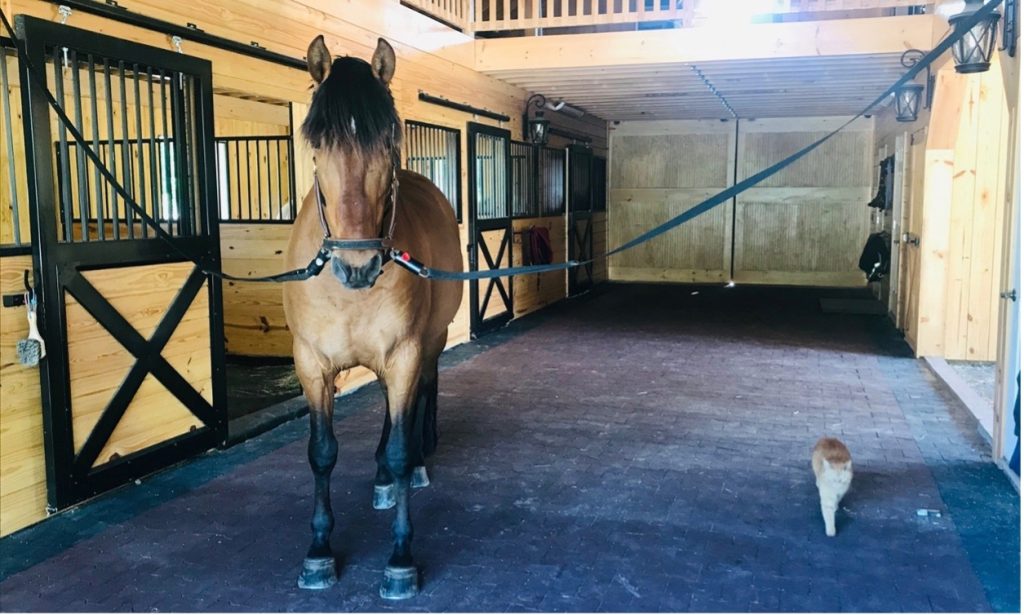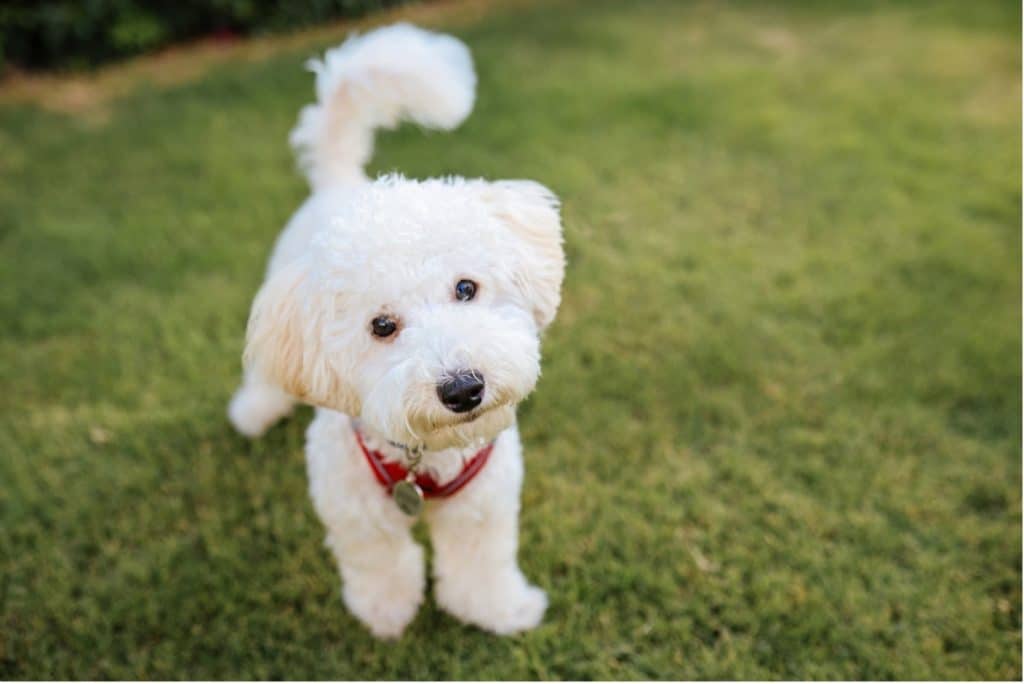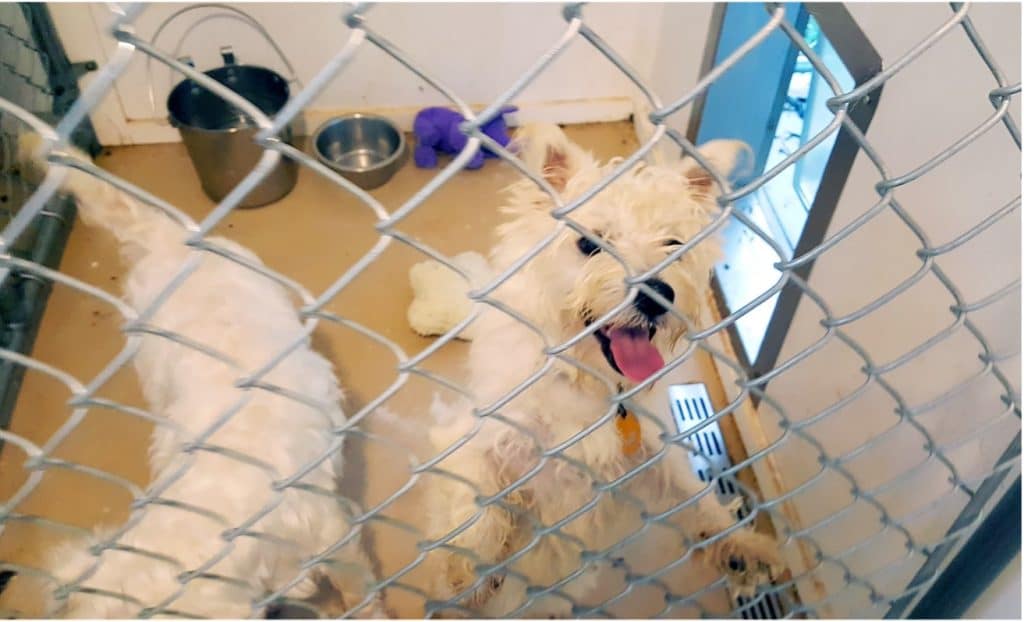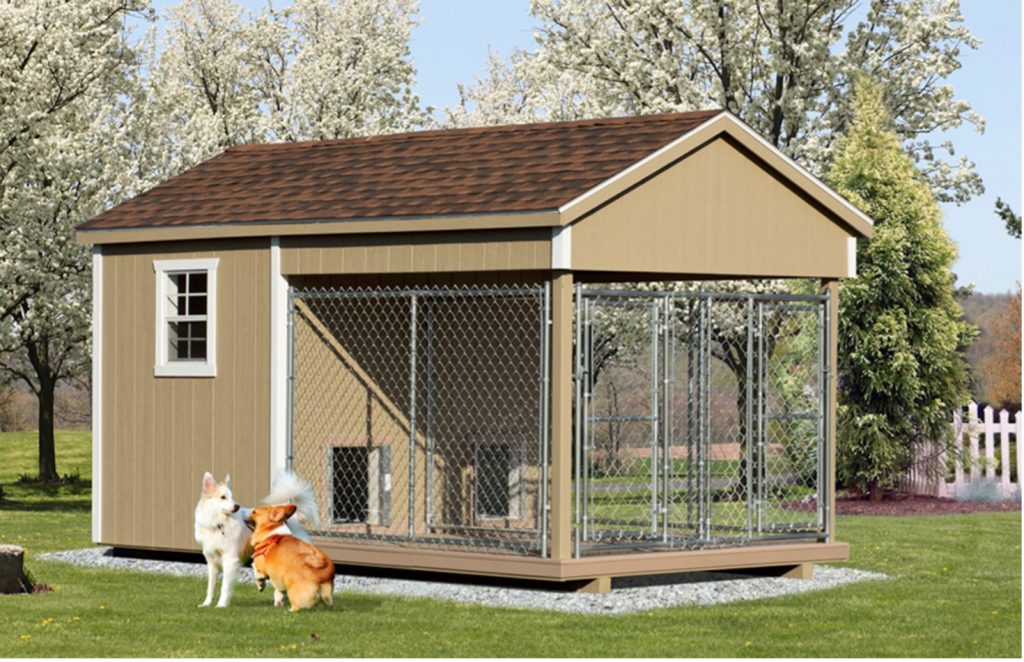The interior design of a horse barn involves more than where to put the stalls, windows and doors. There are many safety facts to consider throughout the barn build and one of them is how the walls are finished.
The addition of horse stall kickboards to the interior walls offers protection to the equine inhabitant from causing injury to himself and damage to the barn structure.
While not typically a structural component themselves, kickboards can be constructed from a variety of materials. Choices include rubber matted walls, waterproof heavy-duty plastic usually laid over plywood or other wood wall, large dimensional lumber, tongue and groove timber or even breezeblock or stone.
Horses are large, unpredictable animals. If they decide to throw their weight around when confined to a stall, significant damage can occur as a result of their antics.
Horses may rear, buck, kick etc. when excited or anxious, and some learn to clamber up a wall to visit over the dividing wall to visit with a neighbor. Horses roll in their stalls and can become cast. This is when a horse inadvertently rolls over and finds itself without the leg room between the stall wall and its body to get up. As the horse is a flight animal it will consequently panic when finding itself in this vulnerable predicament, and kick out repeatedly pushing off the walls attempting to stand.
There are many options when it comes to barn siding and each offers its own benefits. Metal-sided buildings may be particularly hazardous to horses that are either pastured alongside their walls or stabled within, unless there is some form of barrier to access between the equines and the metal sheathing. An inadvertent kick by a horse can easily puncture the metal and cause serious and even life threatening injury if the horse’s hoof penetrates the tin.
Wood sided buildings can similarly be damaged or cause injury if the sheathing only a thin layer of material.
The potential vet bill and the costs for the repair of the siding of the building easily negate the impact of the additional cost required for installation of horse barn surfacing.
Kickboards Equal Wainscoting
The aesthetic improvement of adding kickwalls to stalls should not be overlooked. It could be considered the horse barn version of wainscoting. The latter was a practice adopted in Europe in the 18th Century, where the base several feet of interior walls were coated in wood (usually oak) paneling to cover the rising damp that emanated from the ground into the stone walls of the building.
The wainscoting provided additional insulation as well as hiding the ugly appearance of the dampness climbing the wall. The use of wainscoting continues today, as a decorative adjunct in design that offers protection to the wall surface from scuffing in high traffic areas such as corridors and dining rooms. Just as in wainscoting, kickboards can be applied partially or full-length to the height of the wall.
In certain climates insulation may be added between the kickwall and the exterior wall to help mitigate temperature changes in both hot and cold weather. If insulation is installed it is often a non-toxic spray form that is suitable for use in agricultural environments. Whatever method of insulation is chosen, it is best to utilize a product that is as vermin resistant as possible.
Pros and Cons of Different Kickboarded Wall Heights
Obviously the higher the height of the wall that is covered with protective kickboards the higher the cost for materials and installation. So a half wall height is a plus on the money saving front.
The cons of not going full wall height are that horses that can chew the top surface of the wall unless it is protected by a metal edging, and that metal edging itself could cause injury if hit at the wrong angle by a flying equine leg.
Additionally, a partial wall of horse stall kick panels does not offer protection from a rearing or clambering horse. In fact, a horse can use the partially kickboarded wall for leverage to climb the wall or hang a hoof up on its surface when attempting such naughty behavior.
On the other side of the ‘wall’ equation a full height kickboarded wall can block passive airflow between stalls and block light. The likelihood that a horse will argue with his equine neighbor and launch an attack directly at a partition wall with both hind feet is more likely than a horse kicking a front stall wall or back wall.
During feeding time horses may become excited and rear at a front wall, so a grilled front above a solid front wall is a good idea especially if stallions or youngstock are to be housed in the barn.
Kickboard Wall Materials and Construction
One of the cheapest and most substantial ways to kickboard a stall wall is the addition of rough cut lumber with substantial dimension, such as 2”x 8” planks.
As this type of lumber is not tongue and groove construction, large spans may require additional bracing to prevent warping of the wall caused by temperature fluctuations or by a horse rubbing his substantial rear end or shoulder against the surface. Walls that bow out between boards can present foals and small equines whose smaller hoof size can become stuck in the gap.
The wall support may be in the form of a curved steel rod placed vertically in the center of the wall or flat aluminum brackets placed on top of each timber member that join each plank together with low profile screws or nails keeping them in place.
However the wall us supported it is advisable that its support placement offer a horse friendly curved surface to help avoid injury if it is used as a rubbing post or preferably is a flat design that does not stand proud from the surface of the wall.
Stall partition walls must always be well-secured on each side to ensure that if a horse leans heavily on the wall, kicks out or launches itself against the wall, it will be strong enough to stand firm.
Breeding farm operators may wish to consider the option of quick take down partition stall walls that can be easily adapted to larger sized foaling stalls when required.
Ideally walls that are of tongue and groove construction should be made of hardwood. If a softwood such as pine is used, its board thickness should be significant to avoid cracking or splintering under impact.
Certain pine wood species such as Southern Yellow Pine, Douglas Fir or Cypress are commonly used in barn construction. As long as sufficient thickness of the material is used these offer a budget-friendly product that is readily available on the market.
Whatever type of wood is used for the kickboards it is important to consider the grade or quality of the wood as this affects its strength. The lower the grade of wood the more knots it will possess. This factor directly affects its strength and durability as well as its aesthetic appeal.
Horses may chew or gnaw on wood, and it can be difficult to clean. It is advisable to coat any wood surface with a non-toxic sealant to both protect the wood from moisture and to ensure hygiene can be maintained when it is hosed or sprayed down with a disinfectant solution.
Sealing the wall surface is best done before the horse is introduced to the stall while the walls are clean and offer good adherence for the sealant.
Breezeblock construction is another option for wall protection, though it does not yield on impact to the force of a well-landed kick. This can result in more damage to the horse. It is however, easy to clean, especially if painted or sealed with a non-toxic, non-porous product.
Rubber can also be used on stall walls, and offers the highest level of protection from injury to the equine occupant. A padded cell style construction is often used in surgical recovery stalls or rehabilitation facilities. Rubber is usually applied over a smooth wood surface.
Don’t Forget The Aisleways & Wash Stalls
High traffic areas such as aisleways are usually located between stalls on either side so the front stall walls. In horse barn designs that include a tack room/office/bathroom/feed room or washstall there will necessarily be areas that may not be constructed of the same heavy duty lumber.
Washstalls are often sheathed with a waterproof plastic based product for easy clean down. It is a good idea to install such sheathing over a solid base layer if it is thin or flimsy in nature.
For the facing walls of other rooms it is tempting to place cabinets, shelving (lots of cleaning!), message boards etc. A solid wood wall is a good option that will provide a durable surface to attach the varietal equestrian ‘accoutrements’ that are often found in a horse barn.
Wherever such items are placed, ensure that there are no sharp corners within the reach of where a horse may be led or cross-tied that may cause eye or shoulder injury. Consider horse friendly bendable rubber hooks versus metal ones for hanging coats/bridles/halters and avoid cluttering the aisle with obstacles such as wheelbarrows, tools or tack trunks that may pose a hazard to a horse passing by.
Tips For Extra Comfy, Cozy Equine Quarters
The addition of rubber matting or interlocking floor made of composite materials and backfilled with stonedust laid over the surface of the stall can save on labor and bedding costs as well as improve the comfort and health of the horse.
A textured floor surface can provide traction for the horse when standing up after laying down for a nap or roll, as well as offer a barrier to dampness and cold that emanates from a concrete or dirt floor.
Horses suffer arthritis the same as humans do, and their joints benefit from cushioning and protection from cold surfaces. A horse that stands for long periods on a hard surface such as concrete, will also be less comfortable than a horse standing on a soft rubber matted surface that offers some shock absorption. There are many stall floor-matting options on the market. It is prudent to utilize a design that does not become slippery when wet.
CLICK HERE to Request Horizon Structures’ FREE Barn Buyer’s Guide and Price List
Bedding materials such as shavings or straw may be ‘banked’ around the sides of the stall to mitigate the chances of a horse becoming cast as well as offer protection from cold drafts of air with its additional insulation.
A Dutch door and/or grilled window offers the stabled horse a room with a view. This access can decrease boredom and provides emergency access to the barn and offers fresh air/passive ventilation for its occupants. Keeping your horse physically well includes keeping him mentally stable when confined.



